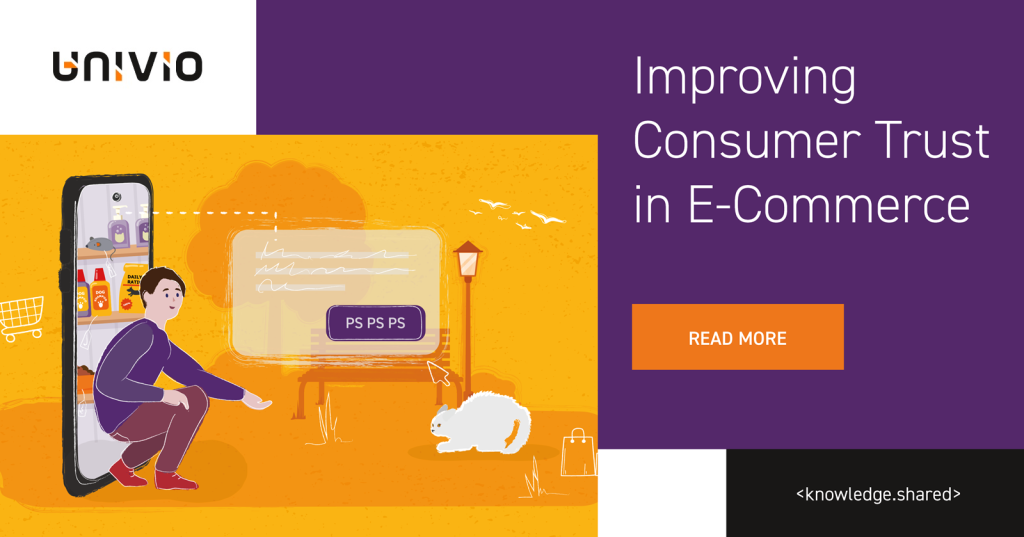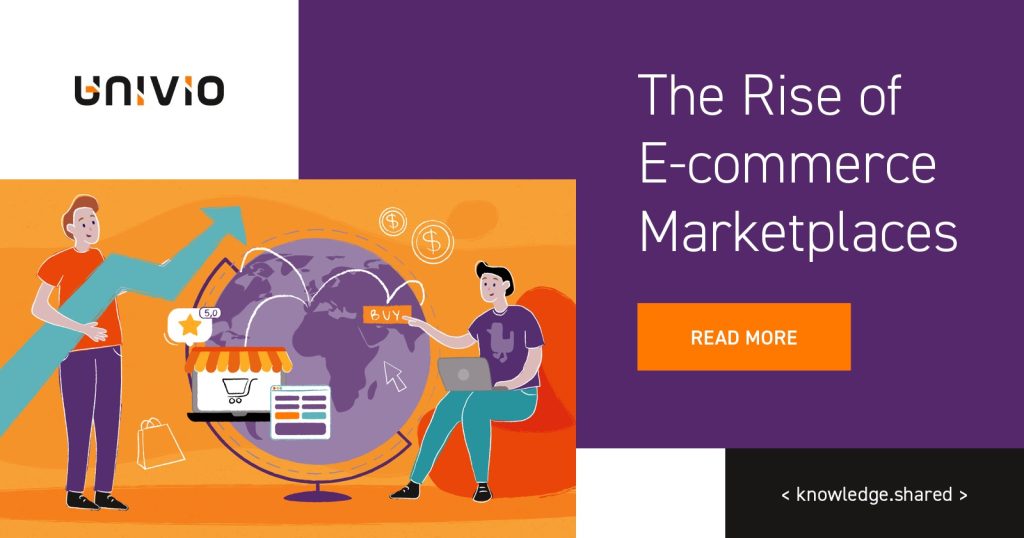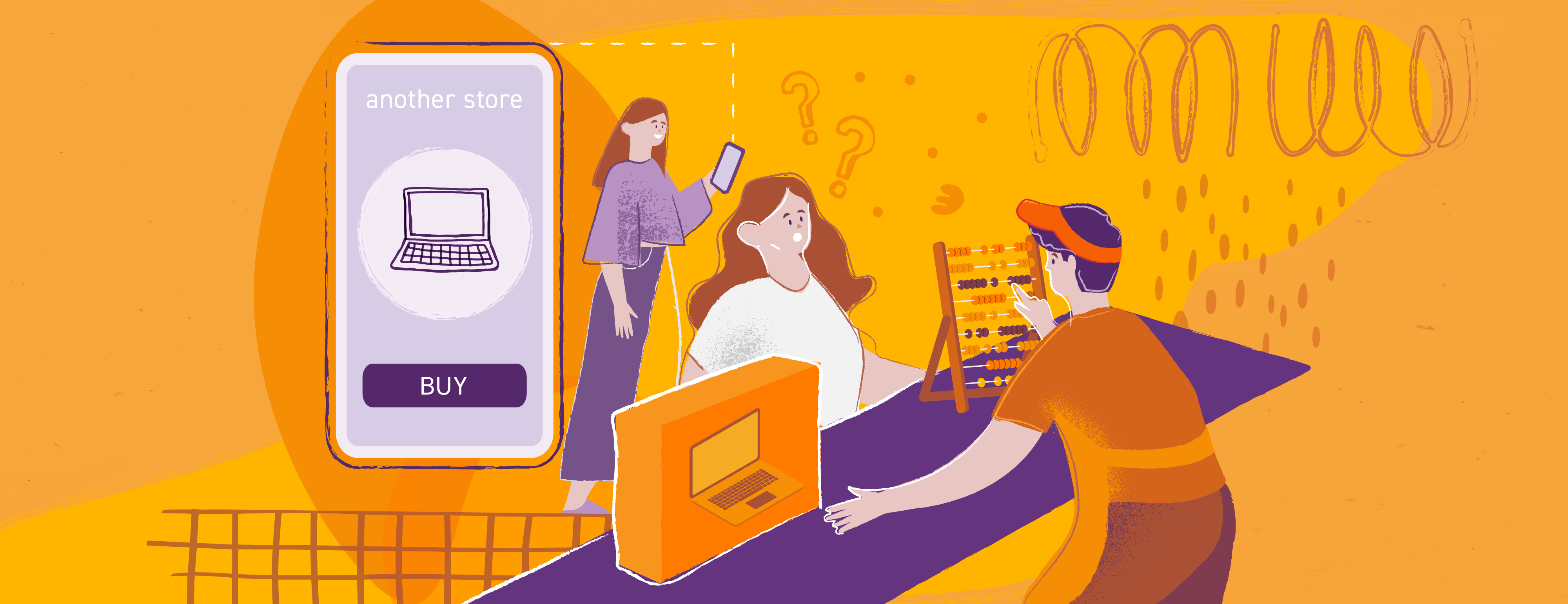Recommerce / The Importance of Pre-owned Goods on the Broader Retail Market
In the past year or two, recommerce has grown immensely in popularity. With difficult economic situations, consumers are looking to resell and buy existing goods in order to save money. This in turn impacts direct sales, further encouraging existing retailers to enter the recommerce market.
In this article, we want to explore the essentials of all things recommerce, including:
- What recommerce means, and what the recommerce market is
- The key benefits of recommerce and the secondhand market
- The challenges that companies can face when entering the recommerce industry
- Some key tips and advice for implementing a recommerce business model
What is Recommerce?
Short for reverse commerce, recommerce describes the selling of pre-owned goods, which are then further reused, recycled or resold. It is commonly used to define the wider secondhand market overall.
In the US alone, such reselling is estimated to exceed $188 billion on a yearly basis, and growing. At a finer level, we can also see differences in various industries. Recommerce in Fashion, for example, currently has a global value in excess of $72 billion, with experts expecting it to amount of $652 billion by 2032.
Recommerce in the Broader Retail Market
When talking about the recommerce industry, many often mistake to refer exclusively to online marketplaces. However, it’s important to note that the wider recommerce space covers both online and offline business models. While the term “recommerce” itself was only coined by Forrester Research in 2005, it incorporates an existing if somewhat informal market, with activities found across numerous channels.
Flea Markets
From the very earliest days of commerce, flea markets, garage sales and even “for sale” sections in local newspapers have served as a secondary market. Whether it’s for fashion apparel resale, antiques or even technology, there’s always been an active demand for pre-owned items.
Online Marketplaces
When it comes to online resale platforms, eBay can largely be credited as the original gamechanger. Launched in the mid-90s, eBay not only showed the overall value of recommerce services, but its auction system also showed just how much certain collectables and desired items could fetch.
Specialist Apps & Communities
After the success of eBay, it was only a matter of time until communities formed around common interests, be it local recommerce or dedicated, desirable items. In addition to groups on social media, apps like Vinted serve specific needs (such as fashion resales) that are continuing to grow and thrive.
Dedicated Brick and Mortar Stores
It’s also worth emphasizing that there are many physical retailers dedicated to reselling goods. Whether these are charity stores, or for-profit businesses, these companies made a niche for themselves when premium brands overlooked the potential of recommerce platforms.
Trade In Programs
When it comes to companies implementing recommerce for their own goods, trade in programs were the first big step. With trade in options, companies can use existing outlets, or operate via the mail, to receive used goods. Typically, consumers are given credit towards their next purchase as a result, helping to retain customers.
Benefits of Recommerce
There are many benefits to recommerce, which is of course why we’re bringing it up 😉 For companies that typically operate in the traditional business model, these are the most important advantages of recommerce.
Increasing Product Lifespans
By reselling, companies can enable product reuse and thus help items increase their lifespan. This helps meet the increasing needs for sustainability and for companies that directly showcase their greener initiatives.
Encouraging Sustainability
Similarly, recommerce helps consumers live more sustainability. By taking on the responsibility for reusing goods, shoppers learn to not only trust brands, but trust that their own purchases are making a reduced impact. Recycling, obviously, helps to reduce waste and potentially relieve pressure for new materials and their associated impact, while reselling helps other consumers avoid buying direct (while also keeping items out of the landfill).
A Circular Economy
Recommerce also plays a vital role in developing a circular economy. When producers become involved in good resale operations, they actively encourage such sustainable practices, rather than always fighting against it.
Brand Loyalty
Finally, it should be noted that all of these benefits have a direct impact on consumer trust and the public associated with brands. Today’s consumers are looking for sustainable brands, and actively consider sustainable factors when making purchases. Companies that can actively show real initiatives therefore standout compared to those that don’t.

New Buyers
Alongside additional consumers, recommerce can help your brand reach out to additional audiences that might not have previously impacted your sales. For example, younger consumers are increasingly more price conscious, and second hand goods, especially if purchased from the original brand, can help these customers experience the quality of your products. In turn, this can convince some to come back for more second hand goods, or even purchase new items now that they are invested in the brand.
Challenges of Recommerce
Alongside benefits, we also need to consider the key challenges or hurdles that businesses must face when embracing recommerce services.
Smaller Margins
While still profitable, the majority of companies will find that the secondhand market does not typically match or outweigh the revenue from premium, firsthand goods. This is for a couple of reasons:
- Resale price: There’s a firm upper limit on reselling items at a profit. It’s near impossible to resell goods for the full price of their firsthand counterparts, and lower quality goods naturally sell for less, too.
- Cost of purchasing: Companies also need to typically buy back goods from sellers, further shortening the margins. Whether this is direct cash, in-store credit or something else, it nonetheless has a direct business cost.
- Declining value: In many industries, like the automotive sector, goods lose value not only to new models, but simply by being preowned. Likewise, most older clothes lose value due to changing trends, while used electronics simply don’t have the same features or standards as their newer equivalents.
Additional Competition
When a business sells its own produced goods, its able to actively control how and where those products are sold. This is best seen, for example, in the fashion industry. Companies like H&M sell exclusively on their own websites. In other cases, like the furniture sector, companies can sell new items through their own websites, or through a carefully selected portfolio of showrooms and marketplaces.
With secondhand goods, this isn’t the case. Sellers don’t need permission to sell their own products, meaning buyers have many more options, most of which don’t involve the original brand at all. For those original producers to be involved, they need to have a competitive offer.
Authenticating Secondhand Goods
It’s also worth noting that secondhand goods need to be both authenticated and evaluated before they can find new life with a second owner. The reason for this is critical:
- Authentication: First of all, are the goods from your one of your original brands? In a world of imitation goods (not helped by encroaching Asian marketplaces), it’s tempting for counterfeiters to sell fake goods to brands in order to gain store credit or other forms of profit.
- Evaluation: Next, companies need to assess and grade the quality of received goods. Some companies might only accept items in near mint condition, while others might have different levels of quality with lower levels, for example, going straight to recycling rather than reselling. Either way, as established, the quality of a used product directly impacts the resalable price.
These steps are necessary but nonetheless come at a cost, whether that’s in staff time, new facilities or a combination of the two.
How Can Brands Work With the Secondary Market?
For the longest time, businesses viewed resale programs as detrimental, rather than advantageous, and selling refurbished products was consequently the exception, rather than not the norm.
As time went on, the idea of a recommerce platform or system has started to take root. Now, many leading companies have their own initiatives, and those that don’t are losing out on a small, but still measurable, area of revenue.
A dedicated resale program, for example, can do many things for your business. It can help open up new channels, if you decide to use external marketplaces, or bring people into your existing stores, be it online or offline, if you choose to keep it exclusively under your brand.

Modern Examples from the Recommerce Market
It’s safe to say the recommerce market is in full swing. Whether it’s a self-branded resale program or a separate entity, many leading brands currently have recommerce initiatives in their business model. To inspire those still considering such an expansion, here are some of the biggest examples of recommerce in action.
H&M / Close the Loop
Started in 2013, H&M’s Let’s Close the Loop program is one of the biggest of its kind, both in the fashion industry and wider world. Consumers can return items at in-store collection points to receive thank-you coupons. From there, H&M then determines which goods can be reworn (sol das second-hand clothing), reused (repurposed into other items) or recycled down to textile fibers.
Alongside leading businesses such as Patagonia – who also launched their Worn Wear program in 2013, which offers consumers up to $100 in credit when they return items – these trade in services paved the way for widescale adoption of recommerce in the fashion industry. Most companies now offer something similar, such as the Renewed program from The North Face. Such recommerce platforms make use of their brands extensive brick and mortar operations, given them plenty of convenient and accessible drop off points for customers that don’t want to send goods back via mail.
What makes H&M stand out above, however, is that the organization accepts clothing from any brand and in any condition. This way, H&M gains a competitive advantage over brands that don’t offer recommerce, as it still offers their consumers a means to give clothes a useful life, while also tempting them to enter a H&M branded store.
Additionally, the chain also started its Conscious Exclusive collection in 2019, which enables consumers to rent clothes, rather than buying them outright.
IKEA / Buy Back & Resell
Originally launched in 2021, IKEA’s “Buy Back & Resell” program can be found in numerous countries. The premise itself is simple: consumers can sell their previously used IKEA furniture for store credit. These goods are then sold “as-is” at a discount.
IKEA gets to resell its own goods, while also ensuring the seller stays with the brand. In addition to securing brand loyalty, this further ensures IKEA’s position in the secondary market for its own products. This is a unique distinction here, as the furniture sector is catered by various third party marketplaces – the US alone has marketplaces such as AptDeco, Everything But The House and Chairish, to name but a few.
Apple / Trade In
When it comes to trade in services, the technology retail sector is often ahead of the curve and Apple’s own Trade In option is a perfect example. The company lets customers return their old products for store credit.
This is important for Apple because it lets them recycle their products. Phones, tablets, computers and other electronics have a lot of materials, including rare earth metals, that can be very expensive. Recycling lets these companies reacquire these materials, in addition to the typical benefits of buying back from loyal brand advocates.
Lego / BrickLink
When it comes to recommerce, the Lego company faced something of a unique challenge. While other companies sold singular items, such as the aforementioned businesses, Lego’s products could be actively separated into individual components and a wider inventory. If a customer wanted to buy individual pieces, the secondary market meant they did not need to purchase brand new products from Lego directly.
BrickLink was founded by third parties to exclusively meet this demand. Operating as a marketplace, it enabled sellers to sell individual components. Later, it started selling its own prepacked sets to compete directly with Lego – so much so that the latter bought it out.
All of this puts Lego in a rather unique position. The company sells new products through third party retailers, in addition to their own stores, and also sells its own individual items through its “pick a brick” program (available on their website and their own outlets). BrickLink, then, adds a new channel to an already crowded area. However, Lego as a company has shown a keen understanding of modern technology and solutions, so it remains to be seen how the company combines or reconciles its two “per piece” purchase options.
Getting Started With Your Own Recommerce Solutions
So how can you best enter the this market? Of course, it’s different for every business, but there are a few key steps that need to be considered.
Do Your Research
Every new initiative should start with market research and recommerce is no different. You should start by looking at where and how goods are being sold. In particular, this should cover both goods in your industry and specific products from your business.
Here, you want to consider what the typical prices are for such products, if consumers are going to brands directly or looking at dedicated marketplaces, and the overall quality and experience that the public has. When implementing your own recommerce solutions, you need to meet – or exceed – these existing expectations.
Implement a Quality Control Process
As mentioned earlier, resold goods will have varying levels of quality. Your recommerce process will need a way to grade incoming goods. At the simplest, this can be a ‘yes or no’ option, choosing between what to resell and what to recycle. For more complex processes, you can adjust pricing levels for varying quality.
In any case, this needs to be planned and documented, as it’s a new way of grading goods for your business. While such operations could be performed by the same quality control teams, if you operate with local, physical stores, you should consider implementing such processes at the store or regional level.
Leverage Technology
Naturally, you’ll need to adjust your technology to accept these new services. Fortunately, most platforms and tools only need to be adjusted: done right, you’re not rearchitecting your entire infrastructure.
For example, if you’re going to store preowned goods, you need a way to measure your inventory without getting new and used mixed-up. This can be as simple as ensuring your PIM and warehouse solutions distinguish between various categories – not just old and new, but the different level of quality for second-hand goods – as well as ensuring separate storage locations to avoid any human error.
You also need to consider how to implement recommerce with existing channels. For example, many fashion companies have either a microsite or companion website for their trade in programs, but you also need to consider shopping apps, loyalty programs and other brand-wide channels.
Commence the Recommerce
This was just a brief look at recommerce, but we hope we’ve shown its importance. Evolving from humble garage sales, reused products now represent one of the most critical emerging markets for various industries. In tough economic times, they provide retailers with an additional channel and selling arm but, even outside of this, recommerce enables brands to launch new channels, reach new customers and better adapt to an increasingly savvy, conscious and aware audience.







